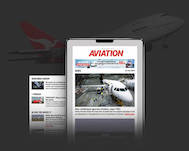Two aircraft came within metres of hitting construction crews at Melbourne Airport in 2023 due to their flight crews being unaware of a shortened runway, the ATSB has said.
A Malaysia Airlines Airbus A330-300, 9M-MTL, passed just seven metres over the top of work vehicles at the end of Melbourne’s runway 34 on the night of 7 September 2023, followed by a Bamboo Airways 787-9, VN-A819, passing less than five metres overhead 11 days later.
This content is available exclusively to Australian Aviation members.
A monthly membership is only $5.99 or save with our annual plans.
- Australian Aviation quarterly print & digital magazines
- Access to In Focus reports every month on our website
- Unlimited access to all Australian Aviation digital content
- Access to the Australian Aviation app
- Australian Aviation quarterly print & digital magazines
- Access to In Focus reports every month on our website
- Access to our Behind the Lens photo galleries and other exclusive content
- Daily news updates via our email bulletin
- Unlimited access to all Australian Aviation digital content
- Access to the Australian Aviation app
- Australian Aviation quarterly print & digital magazines
- Access to In Focus reports every month on our website
- Access to our Behind the Lens photo galleries and other exclusive content
- Daily news updates via our email bulletin
Runway works were underway at the time, and while nobody was physically injured by the jet blasts, there was at least one stress-related injury.
According to the ATSB, while both crews had received advice about the shortened runway in NOTAMs and via the ATIS (automatic terminal information service) radio broadcast, “neither flight crew” identified that the runway was significantly shortened.
Additionally, the airlines’ respective flight dispatchers “did not specifically highlight the shortened runway in the flight crews’ pre-flight briefing packages” despite having accounted for the reduced runway length in their indicative take-off performance calculations.
“While both crews accessed a version of the ATIS that mentioned the shortened runway, they only noted to air traffic control the weather information from the ATIS, and not the reduced runway length,” ATSB chief commissioner Angus Mitchell said.
“This oversight contributed to both flight crews using the full runway length in their pre-flight performance calculations, and subsequently conducting the take-offs with reduced thrust settings.”
Investigators pointed to the risk of human error in the “fundamental pilot responsibility” to identify safety-critical aeronautical information before a flight, and suggested changes including more conspicuous airport signage, and better communication with dispatch and air traffic control.
“The risk controls to prevent these occurrences were predominantly procedural: relying on flight crews to carefully review aerodrome information, then identify and understand essential information – in this case, the reduced runway length available,” Mitchell said.
“Relying on predominantly procedural defences to recognise and comprehend hazards does not guarantee that flight crews will always have a full and correct understanding of operational conditions.
“Considering the potentially catastrophic consequence of departing aircraft impacting an active works area, additional defensive layers aimed at alerting flight crews to significant runway hazards should be implemented.”
Mitchell also noted that, in line with existing ICAO regulations, air traffic controllers were only required to confirm that the aircraft had received the latest ATIS information, and not that the crew had understood it in full.
“Air traffic controllers have well defined and set responsibilities, which currently do not necessarily require them to directly advise flight crews of all safety critical information,” he said.
“However, where there is doubt or potential that a significant safety hazard may not be understood or acknowledged, they can use their best judgement when it’s prudent to intervene.”
Airservices has proposed changes to ATC procedures around advising crews of shortened runways, while CASA is set to review new ICAO guidelines on more conspicuous airport signage.





